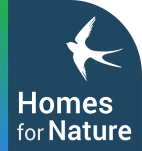Find your new home...
Main menu
As part of our strategy for reducing our environmental impact, we have made a commitment to make the most of opportunities to support urban wildlife throughout every new development.
Our Urban Wildlife Strategy outlines our plans to incorporate wildlife-supporting measures into every new home we build.
It does not represent the extent of our aspirations from a biodiversity and habitat creation perspective, but instead looks to establish a baseline of urban wildlife measures on our homes, regardless of our planning obligations.
As a proud member of The Future Homes Hub (FHH), Cala has also pledged to support the Homes for Nature Commitment. Our Urban Wildlife Strategy goes beyond the measures set out by FHH.

A minimum of one universal bird nesting feature per house and apartment building in line with British Standard (BS 42021). Given their use by other species as well as swifts, this will be an integrated swift brick, considered a universal bird nesting feature.
An average of one bat roosting feature per house and apartment building. We will work with ecologists to identify the most suitable location for bat roosting features on site. They may be incorporated into the fabric of the building, for example high on gable ends or under soffits on front/ rear elevations. Although they will be blocked off behind to prevent access into the wall/loft space, they will provide opportunistic roosting for crevice dwelling bats.
Where the rear garden of a property adjoins other gardens or green space, hedgehog-friendly fencing will be used.
Each house and apartment building that have boundary walls will have at least one invertebrate brick, to welcome solitary bees and encourage other invertebrates. They will be set low in walls and near to areas of planting to help facilitate pollination.
Where a rear or front garden has a depth of at least 10 metres, one tree sapling will be planted as standard.
Planting to support pollinating insects to a standard that aligns with recognised guidance for pollinators.
Sustainable Urban Drainage Systems (SUDs), where appropriate, with design and planting aligned with recognised good practice guidance for wildlife where possible.
We want our sites to be thoughtfully considered throughout their lifecycle. Ecologists are involved throughout the land & planning stage, to advise on the biodiversity approach including wildlife enhancement features, connectivity and habitat improvements. This ensures our Urban Wildlife Strategy is delivered in the most appropriate way for each individual development and its local wildlife.
If it is not possible or advisable to include every measure on a new development, our teams will implement an alternative plan of an equivalent value, as advised by a local ecologist.
Find out more about Land & Planning at Cala
Alongside the measures within our Urban Wildlife Strategy, the delivery of high-quality green space is a priority for Cala, supporting wildlife while also having a positive impact on our customers and local communities.
We have an abundance of experience in delivering green spaces, wildflower meadows, and in handling areas designated as Suitable Alternative Natural Green Space (SANG). SANGs are vital as a means of offering the public alternative outdoor space away from Special Protection Areas (land designated to protect rare, vulnerable, and migratory birds).